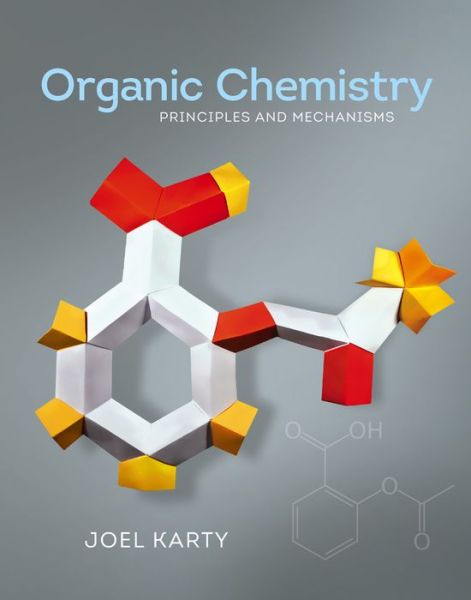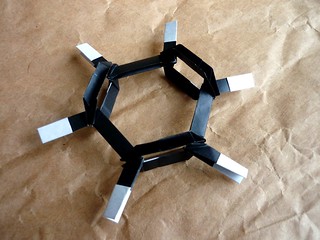Yeah, I've been on the look-out now for Momotani's book...it's hard to come by!
For anyone else interested, I received a reply from the book's publisher about the model on the cover:
"The origami pattern of the molecule was invented by Francis M. Y. W. Ow., and was shared in the article 'Molecular Modeling of Fullerenes with Modular Origami', by Louis Cuccia et al., in
The Chemical Intelligencer. This pattern allows one to assemble structures with vertices of 120 degrees or 108 degrees, allowing one to simulate organic chemical structures (the sp2 link is of 120 degrees, structures with rings of 5 members are 108 degrees, etc). To create a molecule like these one chooses a known one or invents one and proceeds by assembling it based on the angles it has, for example, the anthracene (attached molecule) contains 26 links of 120 degrees, so you need 26 origami pieces to make it. All the links are seen as simple ones and the color difference is dependent on the binding atom, A Fullerene C60 has 120 links, so you need 120 origami pieces to make the complete figure. Principally one makes aromatic molecules with sp2 links."
In case anyone's interested, the article is available
here, and it contains pictures of some pretty elaborate molecules made with the module.

